The exhibition Dal cuore alle mani: Dolce&Gabbana curated by Florence Müller has just concluded at the Palazzo Reale . More than an exhibition, it was a true immersive experience, enriched by multimedia artistic contributions, and a dual narrative: on the one hand, the history of Dolce&Gabbana retraced through the highlights of the two designers’ careers, and on the other hand, Domenico Dolce and Stefano Gabbana’s bond with Italy, told through the culture and evolution of Italian fashion and the concepts of Craftsmanship, Handmade, Tradition and Innovation.
Articulated in twelve themed rooms, the exhibition housed Haute Couture, Haute Tailoring and Haute Jewelry dresses, accessories and creations among the fashion house’s most prestigious and iconic, building around them spectacular hybrid displays that combine fashion and art. In several cases, in fact, the installation made use of physical works or virtual and digital interventions by artists who collaborated on the project in close dialogue with the designers: these did not include the French-American painter Anh Duong, linked to Dolce and Gabbana by a longstanding friendship, whose paintings made between 2012 and 2024-mostly self-portraits and quotations from reinterpreted masterpieces of modern art, such as Manet’s Breakfast on the Grass- adorned the walls of the introductory room, dedicated to Italy and its craft traditions preserved and passed on in the ancient workshops, laboratories and neighborhoods of historic fashion and textile centers such as Venice, Milan and Florence, Alberobello, Agrigento and Syracuse, Naples, Capri, Como and Portofino. In the center of this first room, titled Fatto a mano (Handmade), triumphed a group of mannequins wearing majestic gowns masterfully sewn and embroidered with scenes and views of Italian cities, and made in a vast assortment of fine fabrics and materials: from tulle to lace, satin to organza, chiffon to sable, silk to brocades, chenille to velvet, to name but a few; then sharpening the eye, one noticed a universe of tiny luminous elements and details, tiny shiny seams, inserts, patterns and decorations of pearls, sequins, cabochons, feathers and crystals.
Subsequent rooms welcomed visitors into ever new and different worlds, within which clothes, accessories, footwear and jewelry of formidable craftsmanship and artistic execution stood out, witnessing the creative flair that gave rise to some of Dolce and Gabbana’s legendary collections and fashion shows, characterized by ever changing themes, tastes and styles: from Murano glassmaking to Sicilian folk traditions, from the concept of sacredness to the sensuality of lace, from fashion in Luchino Visconti’s The Leopard to the aesthetics of neorealist cinema, from the great Italian Opera to the elegance of Milan’s architecture, from Byzantine mosaics to ancient Greece to Renaissance and Baroque art. So many themes are covered, as equally heterogeneous and eclectic is the production of the two stylists who, throughout their journey together, have always pursued the common goal of research and experimentation by recovering and enhancing the past and the cultural and traditional heritage, and combining it with modernity, progress, innovation and new avant-garde techniques.
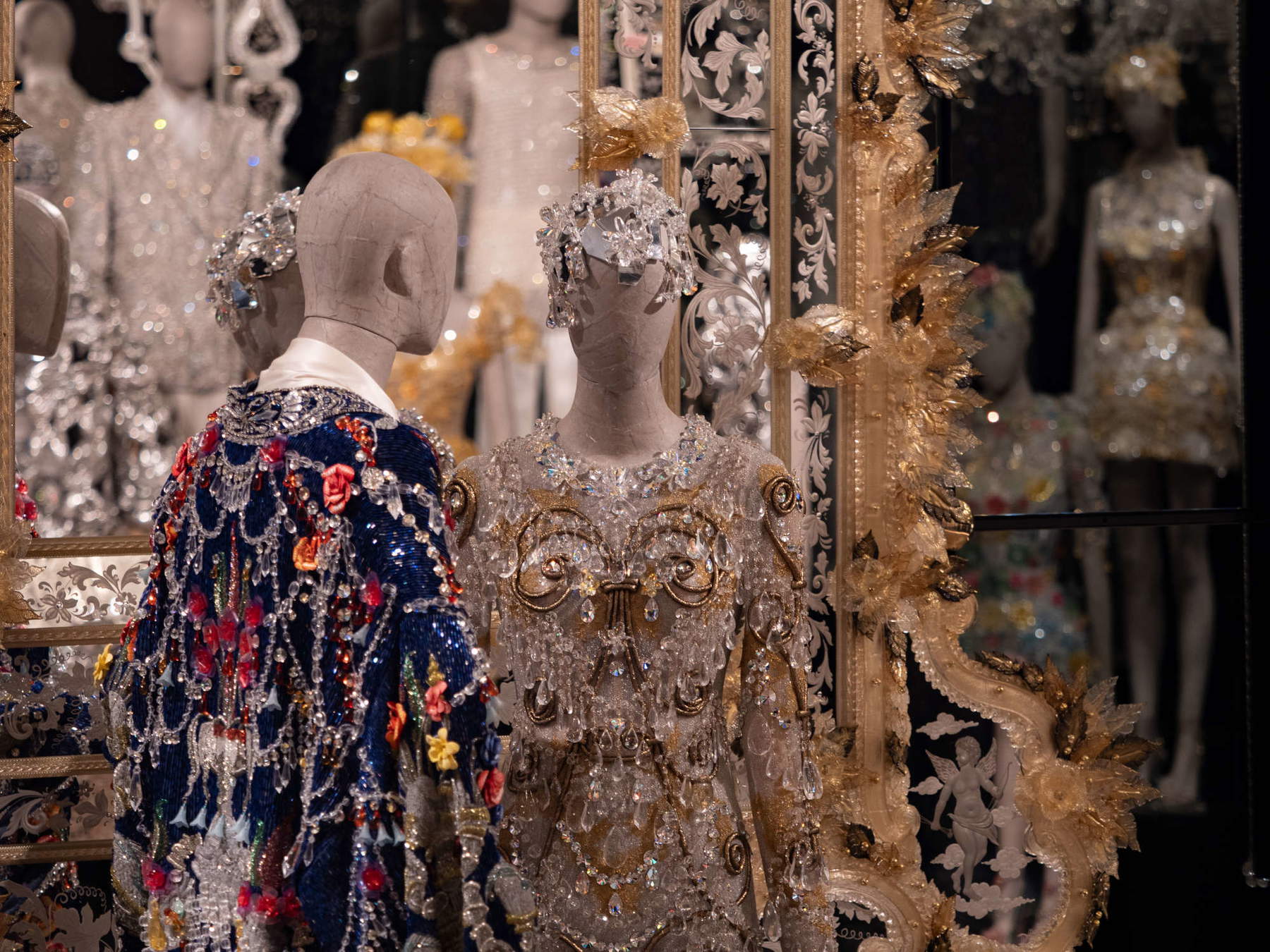
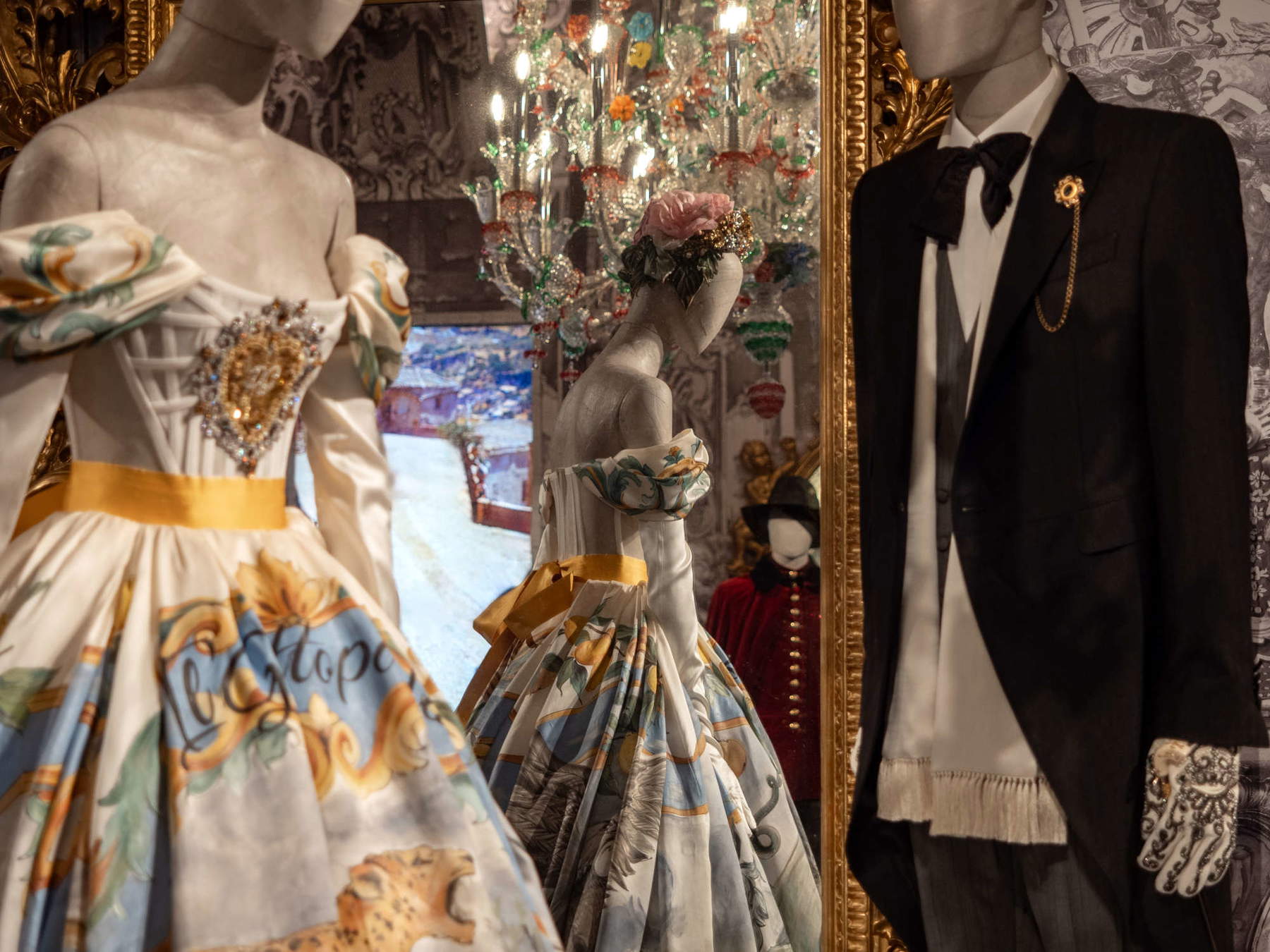
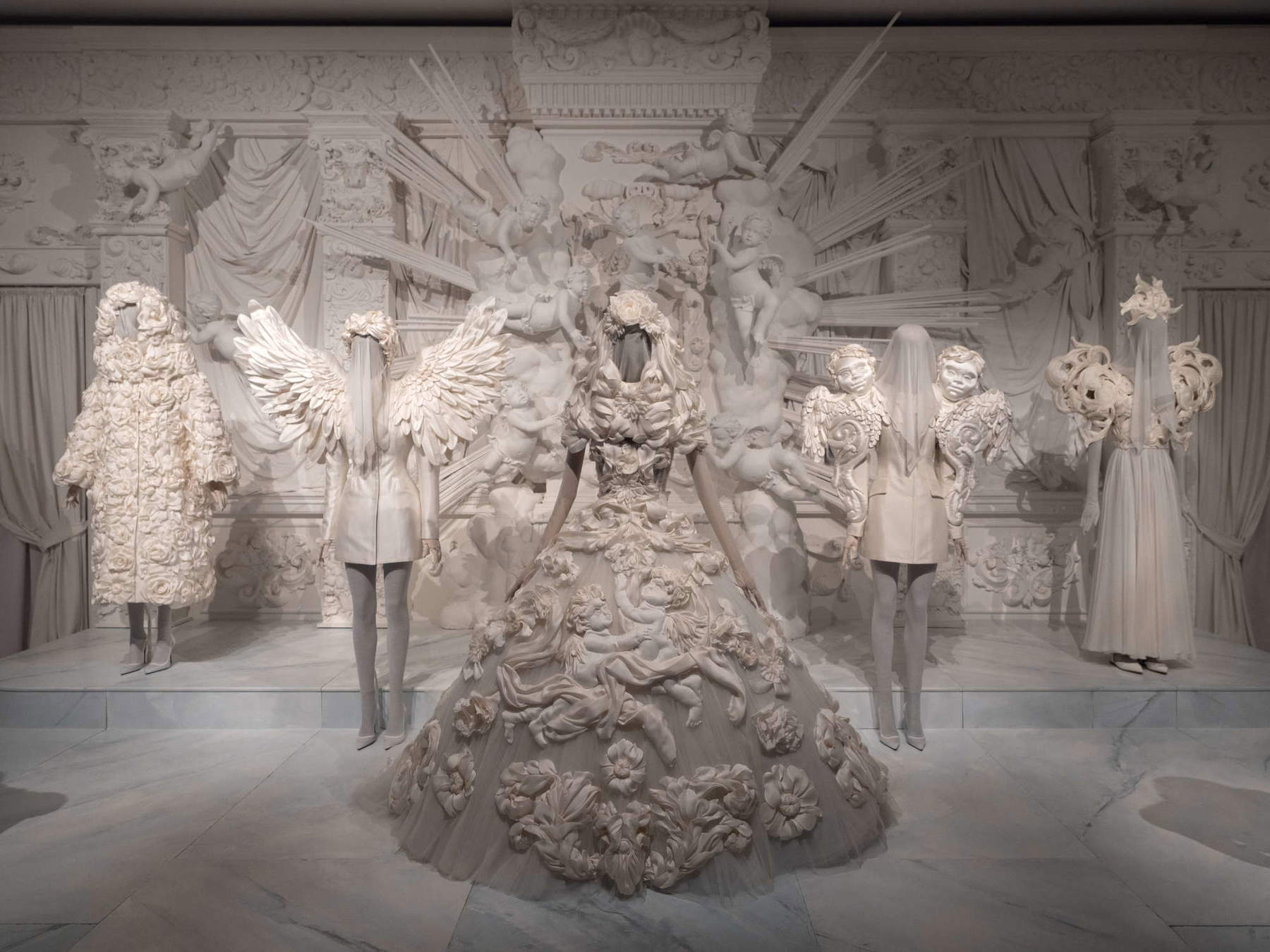
While Dolce and Gabbana love to narrate Italy in its many different cultural aspects, it is clear how their vision always gravitates around two main poles: Sicily and Milan, the native lands of Domenico Dolce and Stefano Gabbana respectively, the North and the South on the geographical map of Italian Haute Couture, and identity places of an extremely complex country, as unified by collective pride in the excellence of Italian fashion and tailoring as it is locally diversified in the knowledge, techniques and workmanship of the past, heritages of inestimable value to Domenico Dolce and Stefano Gabbana.
Two rooms in particular sealed this attachment to their roots: room 7 dedicated to Sicilian Traditions, and room 11 entitled In the Heart of Milan. The first displayed masterpieces of Haute Couture and High Jewelry presented in Palermo in the fall/winter 2017-2018 season, set up on a typical processional cart skillfully constructed and decorated in painted wood and tiles produced in the artisan workshop Ceramica Bevilacqua; the whole set-up could be read as a great tribute to the ancient decorative styles, here recovered by Salvatore Sapienza and Gianfranco Fiore, masters in the art of painting and decorating Sicilian carts. In the second case, a small but symbolically charged room featured a single garment: a macramé lace dress designed on a panier skirt reminiscent of the domed 19th-century architecture of the Galleria Vittorio Emanuele II; the filigree crown, combined with the choice of gold as the absolute color for theentire garment and for the sumptuous setting that framed it, could only symbolize the golden statue of the Madonnina, who dominates the city from the Duomo’s main spire and to whom the Milanese address prayers and attribute spiritual power.
Not only, therefore, an acknowledgement of Milan’s eternal charm, Milanese fashion and elegance, but also a clear reference to spirituality, mysticism and devotion to the sacred, themes that also occupy a special place in the exhibition. We thus reach the Hall of Devotion: Plunged into an almost mystical atmosphere, the visitor has the opportunity to discover the centrality in Dolce and Gabbana’s iconography of the sacred heart, a symbol of love and life, creativity and talent flowing from the heart to the hands - an idea from which the very title of the exhibition stems -, and to admire spectacular gowns that playfully challenge the balance between sensuality and sacredness, thanks to the preciousness of black and gold lace and virtuosic decorations characteristic of 17th- and 18th-century Baroque art. Completing the scene, a gilded pulpit, a typical element of Baroque theatricality, becomes an altar erected to the worship of the perfection of artistic craftsmanship and a metaphor for the passion and pursuit of excellence shared by artisans and designers.
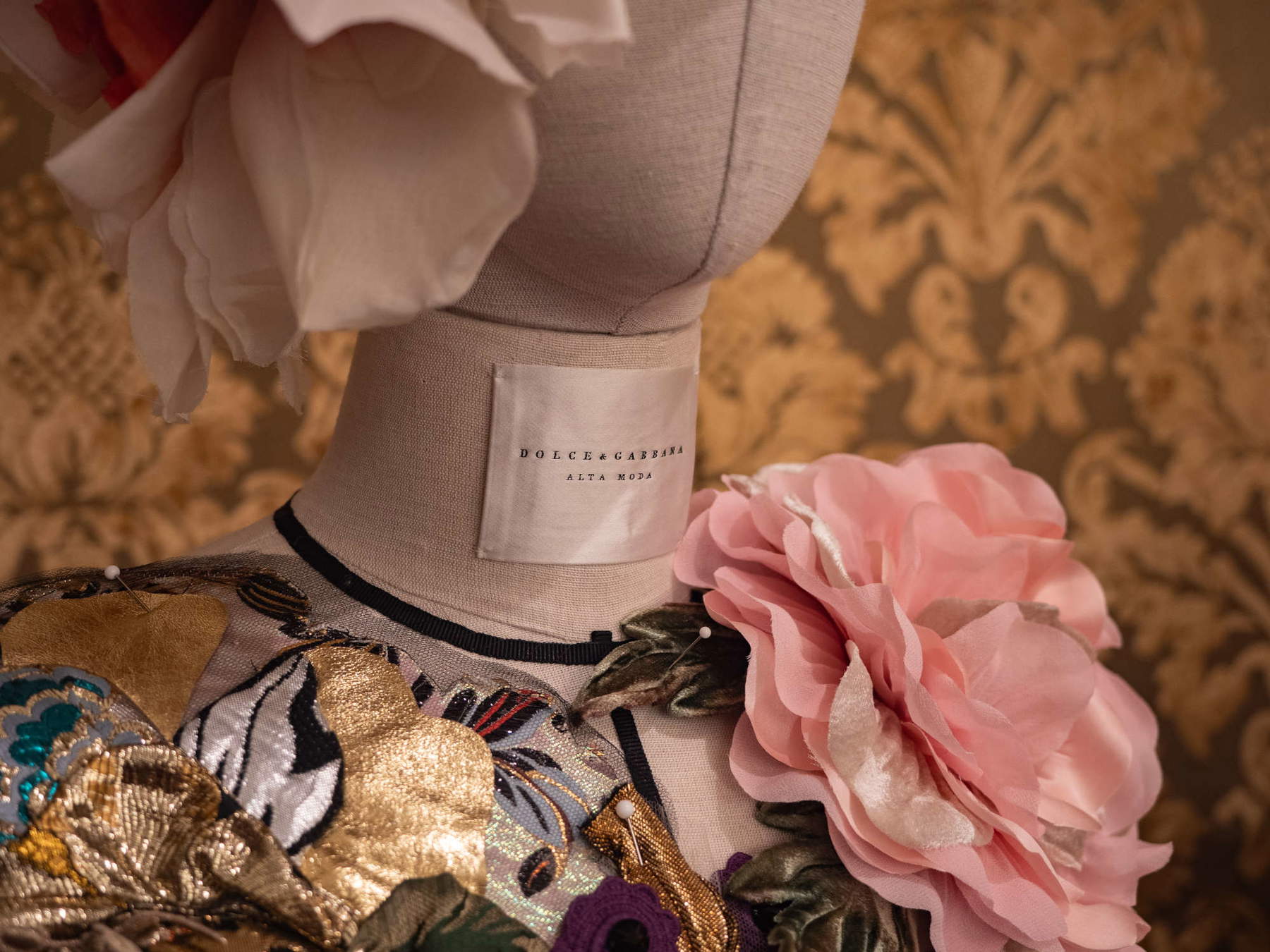
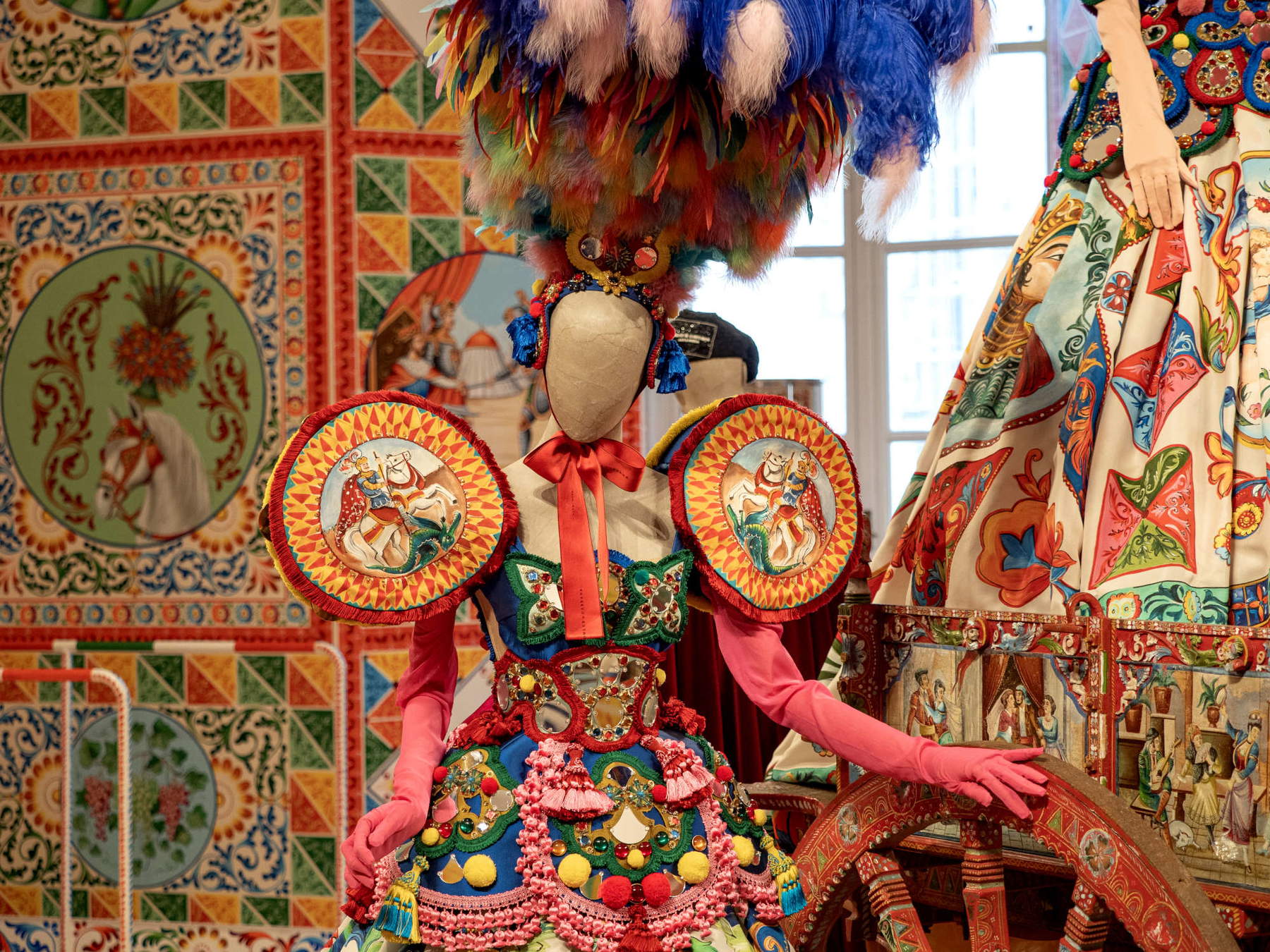
In Dolce&Gabbana fashion, the heart understood as a concept conveying ideas of love, passion and life pervades everything. Walking through the exhibition we come to the heart of the project, which can only be the tailoring workshop. In Room 5, titled Tailoring: Ornaments and Volumes, the stages of the creative, artistic, craft and production process and handmade techniques are told, in short, all those activities that animate the tailor’s workshop. The room evoked some of the rooms of Dolce&Gabbana’s Milanese tailoring ateliers, transposed and meticulously reproduced there in every detail, with figures and mannequins on which one observed pieces of black fabric freshly basted with exposed white thread stitching, destined to be transformed into very elegant tailored suits. On one wall, five vertical screens each showed a video illustrating a step in the process or a particular fabric technique: Embroidery, Loom Embroidery, Milling, Men’s Jacket,Carving. The very well thought-out layout of this room summarized some key aspects of Dolce&Gabbana’s style, such as the designers’ predilection for black, which-along with gold and white-is a dominant color in their distinctive palette: associated with the concepts of essentiality and purity, black is also a symbol of charisma and mystery in the case of the veil of Venetian women, just as it evokes sacredness and mysticism when worn by common women and the figure of the Sicilian widow in Italian neorealist cinema. Also introduced in this room is a fundamental theme: the relationship between tradition and innovation, which has always been very dear to designers, who often in the course of their careers have recovered very ancient workmanships, such as small-stitch embroidery, integrating them with modern, avant-garde techniques such as collage, which allows images taken from nature or art history to be transposed onto the surface of the garment.
And it was precisely art that featured prominently in the next room, dedicated to D&G’s collections that pay homage to some of the great masters, including artists and architects, of the Italian Renaissance such as Botticelli, Leonardo, Raphael, Titian, Piero della Francesca, Giorgione, Caravaggio and many others. Here not only the clothes, but also the jewelry, accessories, handbags and shoes, all bear references to absolute masterpieces of Renaissance art and architecture evoked by means of a rich assortment of exquisitely refined fabrics, sought-after details and small applications that well testify to the very high level of craftsmanship, unparalleled quality and exceptional sensitivity in the creation of works of Haute Couture and High Jewelry.
Stefano Dolce and Domenico Gabbana met in the mid-1980s and founded their first ready-to-wear fashion house in 1985. In the early 1990s, the two designers achieved their first successes and critical acclaim, sanctioning the birth of the Dolce&Gabbana brand, now synonymous with Made in Italy culture globally. Their collections, inspired by cinema, theater, art and music, as well as popular traditions and the Italian landscape, have made Italian fashion history.
Dolce and Gabbana’s strength lies in their constant focus on enhancing their home cultures, which results in a series of sartorial masterpieces that combine ancient, modern, contemporary and innovative elements.
This dichotomy between tradition and innovation, but also between minimalism and eccentricity, darkness and light, black and white, sacredness and sensuality, luxury and folk tradition, is one of the cornerstones of the exhibition From Heart to Hands. The exhibition, capable of great dynamism and emotional intensity, offered the public a temporal journey through the evolution of the taste and style of great Italian fashion, culminating in Dolce&Gabbana’s New Renaissance. Two designers, two artists, two masters of savoir-faire who, with alchemical hands, have been making history shine and shaping the future of Italian Haute Couture for over forty years.
Warning: the translation into English of the original Italian article was created using automatic tools. We undertake to review all articles, but we do not guarantee the total absence of inaccuracies in the translation due to the program. You can find the original by clicking on the ITA button. If you find any mistake,please contact us.